It’s no secret that teams who practice effective collaboration are more productive, more engaged, and more results-driven than those who don’t. But what does collaboration really mean in 2019? How can teams use it to their advantage? To understand that, it is important to understand what collaboration really is and why it matters.
What is team collaboration?
Collaboration is defined as the action of “two or more people working together to produce a desired result.” In the case of workplace collaboration, the desired result is generally tied to a business outcome, sales goal or corporate objective. It may require the collaboration of one team or many teams across departments. With today’s distributed workforce and the need to unite employees across geographies, time zones, and varying work schedules, team collaboration has never been more vital to the success of producing “desired results.”
The challenges of collaboration
While collaboration is an essential part of modern business strategy, there are some common challenges to be aware of before launching a collaboration plan. By addressing these potential obstacles up front, it will take less time to implement and support an effective team collaboration plan.
Cost
Collaboration takes effort, which often translates into expense. Since the goal of collaboration is to bring teams together, it may be necessary for distributed employees to travel to a centralized location for training on collaboration tools and processes. While there is usually a cost associated with professional collaboration tools, many offer free trials. In the end, the business benefits of team collaboration far outweigh the cost. It’s simply a matter of anticipating and planning for it.
Too much information
 With so many collaboration tools to choose from, picking the right one can seem like an overwhelming task. The key is in knowing what features are must-have to accomplish team goals and selecting a solution that supports the unique needs of the team.
With so many collaboration tools to choose from, picking the right one can seem like an overwhelming task. The key is in knowing what features are must-have to accomplish team goals and selecting a solution that supports the unique needs of the team.
Email overload
One of the biggest challenges to effective team collaboration is trying to use email as the primary mode of collaboration and communication. Every employee has experienced “inbox overload,” with more emails in a day than any person can manage. Email just can’t stack up to more powerful collaboration tools like team messaging and project management tools that promote engagement in near real-time.
Lack of buy-in
When teams are used to managing tasks and projects on their own, a formalized collaboration plan may be met with some initial resistance. To increase rapid buy-in of new tools and processes, identify team members who may need an extra nudge to see the benefits that an intentional collaboration solution can bring to the team. Communicate the value of the plan and enlist their help in promoting the solution to the rest of the team.
Is collaboration worth the effort of overcoming the challenges of implementing a new solution? Absolutely. Effective team collaboration has the potential to transform the way teams work together.
The benefits of collaboration
 As companies expand, adding offices and remote workers, it is increasingly important to enable new ways to communicate that don’t involve the time and expense of travel for in-person meetings. Here are a few of the ways collaboration tools save time, money and wasted productivity by connecting employees from around the globe.
As companies expand, adding offices and remote workers, it is increasingly important to enable new ways to communicate that don’t involve the time and expense of travel for in-person meetings. Here are a few of the ways collaboration tools save time, money and wasted productivity by connecting employees from around the globe.
Employee engagement
When information is shared with transparency and regularity, teams are naturally more engaged in the progress of projects and goals. Collaboration tools make it possible to share files, dashboards, and project status to keep teams invested and on track.
Increased productivity
As previously mentioned, traditional channels like email are not always the most efficient solution when it comes to working fast and meeting deadlines. Collaboration tools offer the opportunity to communicate in real-time and quickly engage with the right team members to keep tasks moving quickly.
Higher profitability
When teams are communicating regularly, there are fewer mistakes and less re-work on key projects. The result is a more efficient and productive use of company resources (both human and non-human) and the opportunity to make a bigger business impact in less time.
Faster innovation
One of the biggest benefits to effective team collaboration (that is often overlooked) is the opportunity for teams to introduce innovative ideas that can impact a product, service, process or policy. Some of the best ideas are born of a good brainstorming session. Collaboration tools make it possible to communicate and document new ideas.
Strategies to improve team collaboration
 Once the challenges have been identified, benefits have been communicated, and buy-in is secured, it’s time to implement a collaboration strategy. Here are several proven ways to ensure a successful launch.
Once the challenges have been identified, benefits have been communicated, and buy-in is secured, it’s time to implement a collaboration strategy. Here are several proven ways to ensure a successful launch.
Define goals and roles
Don’t assume that team members understand the goal of a new collaboration strategy. Clearly define common goals, how they roll up to corporate objectives, and how they roll down into personal objectives and success measurements. Likewise, every team member should understand their role in the collaboration process and what is expected of them.
Set an example
If the hard work of gaining buy-in from executives and managers has already been done, it should be a much simpler task to create the right environment to model and support collaboration. When the team sees collaboration happening from the top of the organization down, they will be more likely to participate.
Stay organized
Unless the process is well-defined and organized, teams will get confused and lost interest in collaboration tools. Maintain project management dashboards and tools, keeping information organized and up to date. Likewise, offer teams a venue to provide feedback about what is working well and what could be improved with the process.
Use the right tool
With hundreds of collaboration tools to choose from, there is no reason to suffer through the old-fashioned methods of the past. By identifying goals in advance, it is much easier to select the right tool to foster teamwork and get results. To get started, here are a few of the top collaboration tools available today.
Tools for effective team collaboration
Heycollab: Team messaging, tasks, and collaboration in one app
 Heycollab is the first to combine messaging, collaboration and design feedback in one intuitive platform. Offering the best in team messaging, task and to-do lists, and collaborative feedback tools, Heycollab brings everyone together to keep everything moving forward with real-time visibility into conversations, people, and the work they are doing. With its intuitive workspaces, Kanban boards and collaboration tools, Heycollab gives teams the tools they need to work more efficiently.
Heycollab is the first to combine messaging, collaboration and design feedback in one intuitive platform. Offering the best in team messaging, task and to-do lists, and collaborative feedback tools, Heycollab brings everyone together to keep everything moving forward with real-time visibility into conversations, people, and the work they are doing. With its intuitive workspaces, Kanban boards and collaboration tools, Heycollab gives teams the tools they need to work more efficiently.
Chanty: AI-powered chat
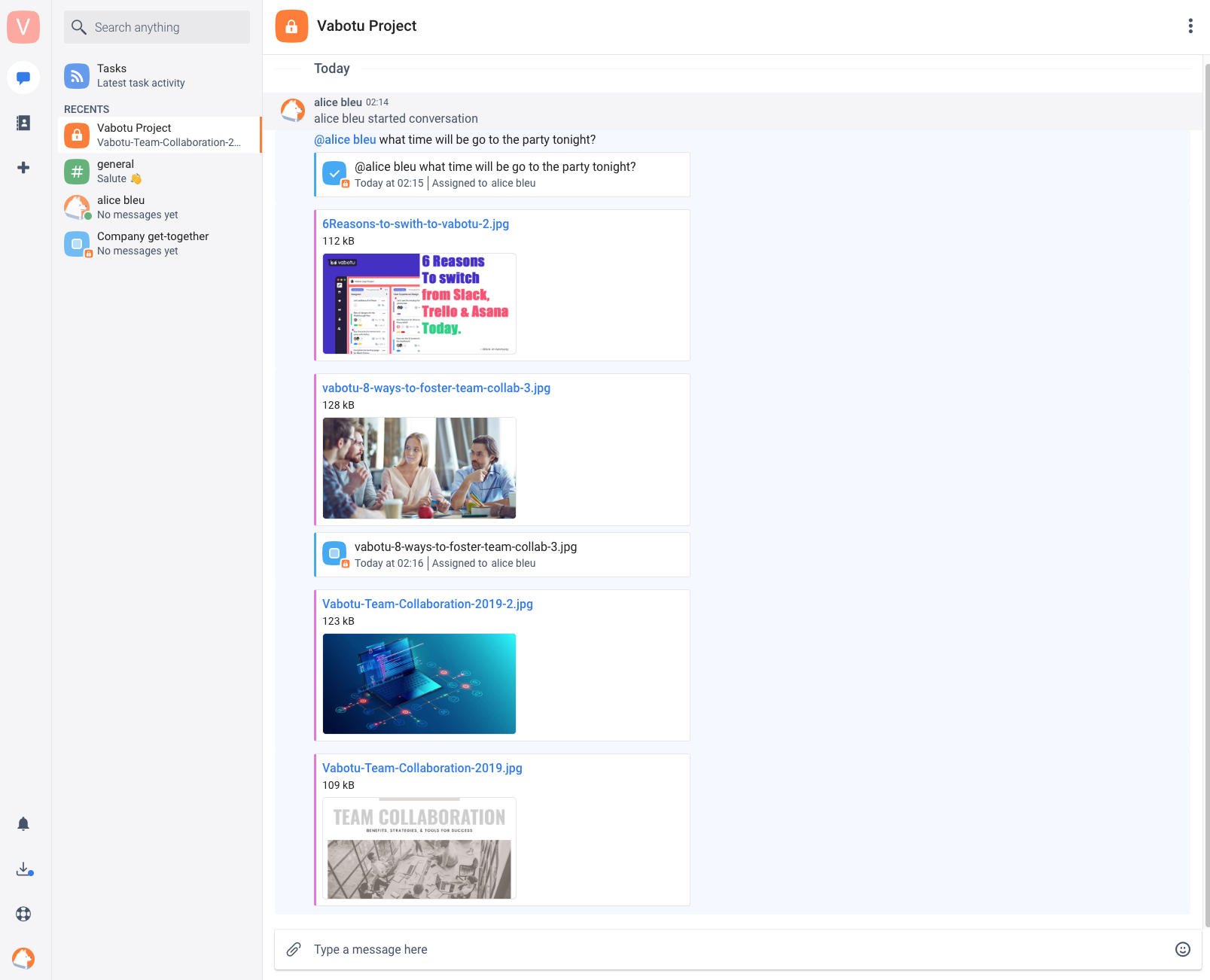 Chanty offers AI-powered team chat, featuring instant messaging, file sharing and synchronized notifications across platforms. With a searchable chat history, Chanty brings context to conversations so that team members can better coordinate tasks. Chanty also offers audio and voice calls, voice transcripts, and integrations with popular business services.
Chanty offers AI-powered team chat, featuring instant messaging, file sharing and synchronized notifications across platforms. With a searchable chat history, Chanty brings context to conversations so that team members can better coordinate tasks. Chanty also offers audio and voice calls, voice transcripts, and integrations with popular business services.
Slack: Team messenger and collaboration tools
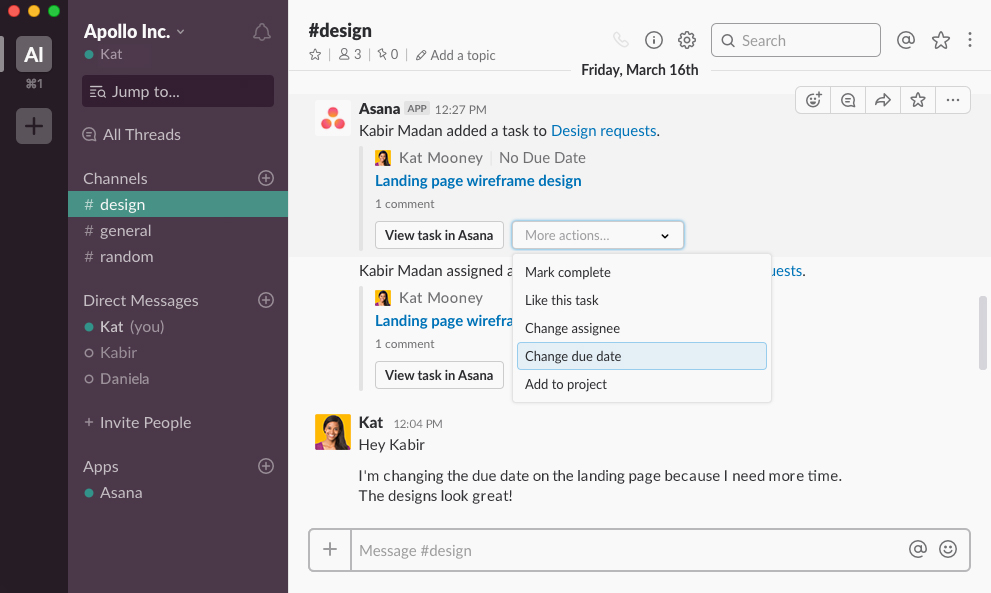 Slack offers a suite of team messenger and collaboration tools, include file sharing, search and archiving and integration with business services and social media platforms like Googe Drive, JIRA and Twitter.
Slack offers a suite of team messenger and collaboration tools, include file sharing, search and archiving and integration with business services and social media platforms like Googe Drive, JIRA and Twitter.
Skype: video calls
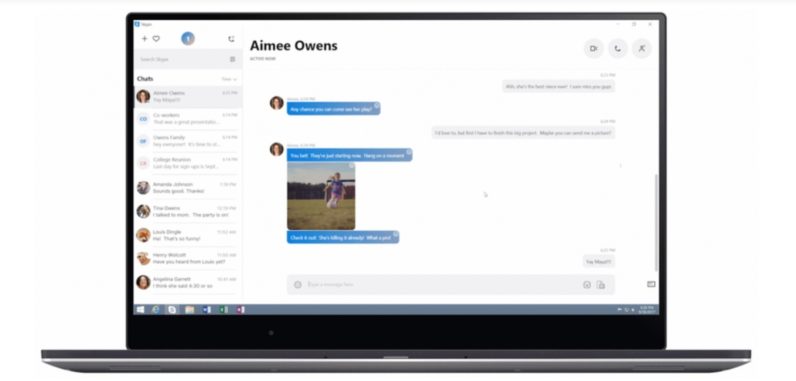 Skype is a video chat and voice call service that allows users to make calls, hold video conferences and communicate across geographies. While Skype offers basic features for free, there are paid features available like conferencing for up to 250 participants and integrations with MS Office and other business applications.
Skype is a video chat and voice call service that allows users to make calls, hold video conferences and communicate across geographies. While Skype offers basic features for free, there are paid features available like conferencing for up to 250 participants and integrations with MS Office and other business applications.
Trello: project management
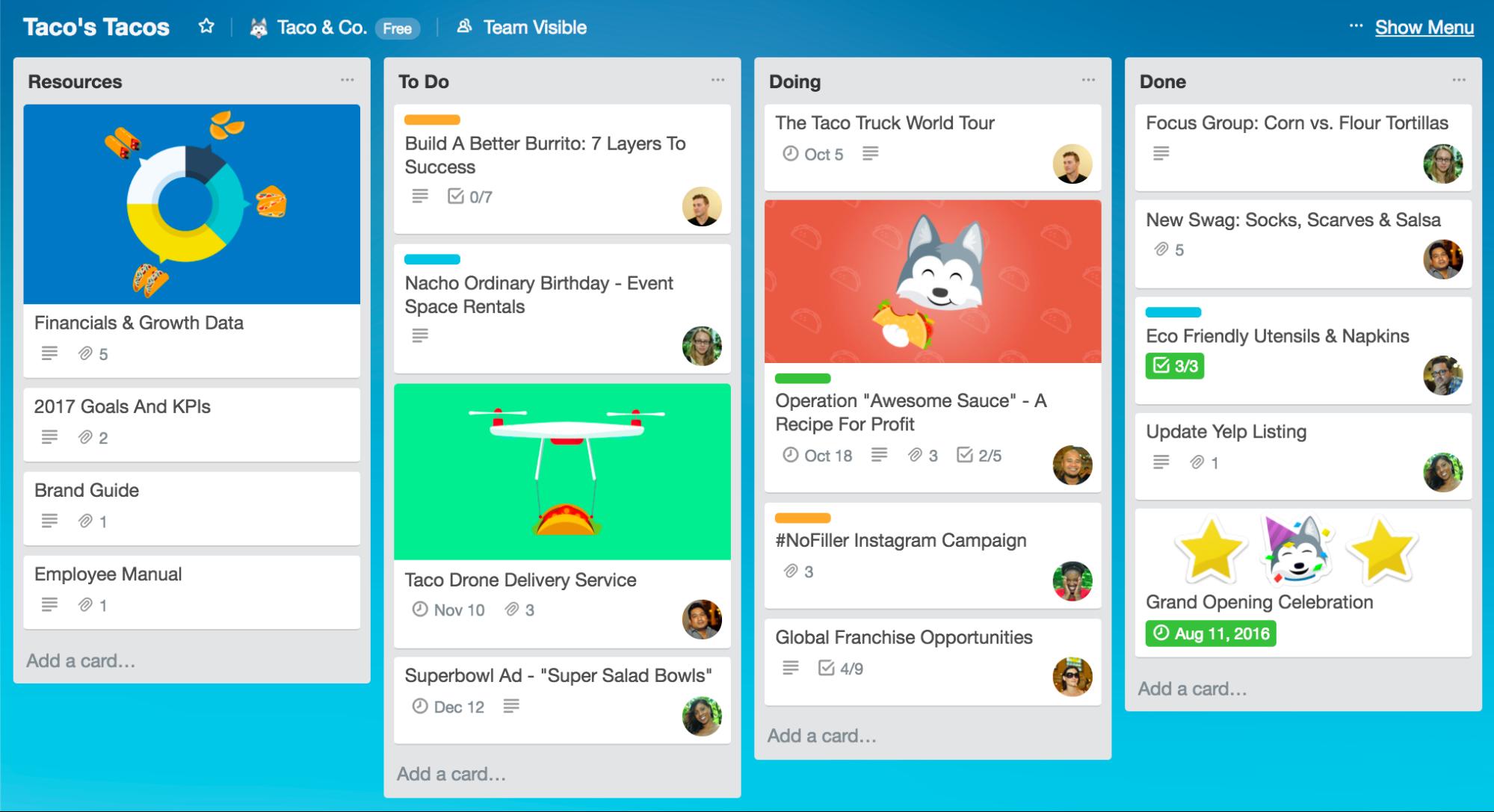 By representing projects on Kanban boards and task lists, Trello offers a visual snapshot of projects from start to finish. Trello users can assign tasks to any member of a team and share boards with external stakeholders. With simple drag-and-drop editing, users can move cards from one list to another to keep progress tracking up to date and visible to all members of the team.
By representing projects on Kanban boards and task lists, Trello offers a visual snapshot of projects from start to finish. Trello users can assign tasks to any member of a team and share boards with external stakeholders. With simple drag-and-drop editing, users can move cards from one list to another to keep progress tracking up to date and visible to all members of the team.
Dropbox: Collaboration apps
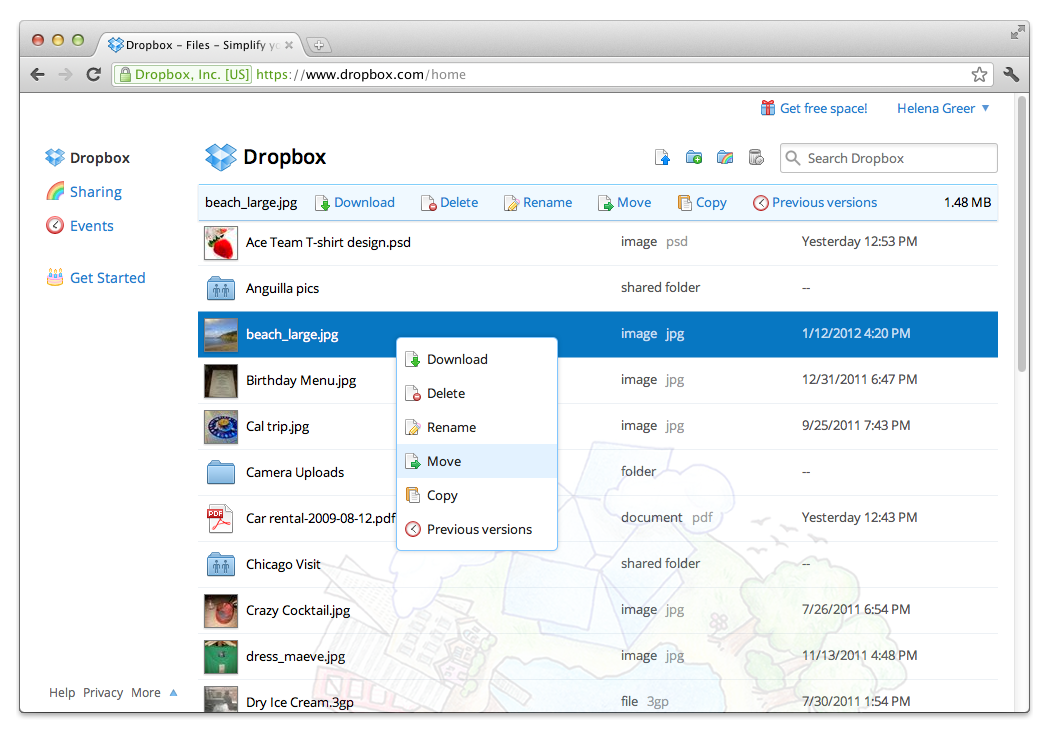 Dropbox was built for remote teams, providing the ability to store, search and organize files across an organization. It also offers the ability to share, edit and comment within each document. Other collaboration features include meeting notes, simple reporting, and integrations to other business services.
Dropbox was built for remote teams, providing the ability to store, search and organize files across an organization. It also offers the ability to share, edit and comment within each document. Other collaboration features include meeting notes, simple reporting, and integrations to other business services.
Getting started
 Collaboration is an important component in creating a culture of engaged employees, actively working together to accomplish key tasks and projects. The best way to get started with a collaboration strategy is simply to start. Communicate the value to stakeholders and team members, and commit to using a tool to stay on track. With so many options and free trials available, the risk of adopting a collaboration strategy is low, but the potential rewards are quite high.
Collaboration is an important component in creating a culture of engaged employees, actively working together to accomplish key tasks and projects. The best way to get started with a collaboration strategy is simply to start. Communicate the value to stakeholders and team members, and commit to using a tool to stay on track. With so many options and free trials available, the risk of adopting a collaboration strategy is low, but the potential rewards are quite high.

